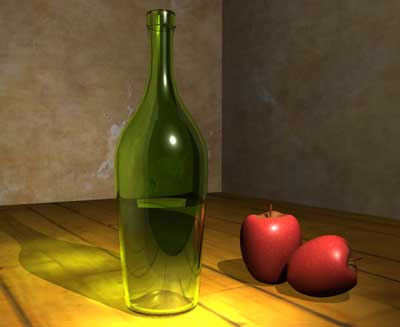
Lab 5: Lighting and Shading
IDS252: 3D Animation,
Spring 2012
Due Date: Mon, Feb 20, before the beginning of class.

Due Date: Mon, Feb 20, before the beginning of class.
The main artistic goal of this lab is to use lighting and shading to help convey the mood and meaning of a scene. The main technical goals are:
The supplementary files that you will need for the tutorials listed below can be found in Rendering folder of maya2012_gettingstartedlessondata. These tutorials will not be collected so feel free to work anywhere, e.g. on your H drive. If you do work on your H drive, make sure that you have enough space.
In Maya, go to Help -> Tutorials. Click on the link Getting Started with Maya 2012. In the contents, click on Getting Started with Maya, and then Rendering. Do the following lessons:
The above tutorials will not be collected.
The goal of this portion of the assignment is to use materials, lighting and camera to convey a specific mood or atmosphere.
Suggestions for the scene:
Materials and Shaders: Include in your scene at least 3 or 4 different objects that in real life have different types of surfaces. For example, a scene of a dinner table might have a wood surface, glassware, plates, silverware, etc. You may use objects you have already created in a previous lab but be certain to include a number of new ones as well.
Lights: Limit the number of lights, e.g. try not to exceed 3. Lights are important in focusing the viewers eye to what is important. They also help to clarify (or hide) shapes and features of objects. Can you explain the purpose of each of the lights in your scene? Recall in class, we talked about key, fill lights, and backlights.
Story: Part of conveying a mood, is telling a story. The image you create is a snapshot out of that story; the snapshot contains elements that hint at what has happened before or what might happen in the future. What story is your scene telling?
Character: You may use bloke if you wish. However, don't rely on him completely to convey the word you have been assigned. The light and textures must do most of the work.
Color: To create color unity, choose the dominent colors based on a chosen color scheme.
Composition: When composing your picture, consider design principles. Where is the eye drawn? Even though you are aiming for realism, still try to create a sense of cohesion through color, shape, light/dark, etc. Try varying the camera and light placement.
Your images will be graded based on these questions, which will be discussed during the critique (attendance is required).